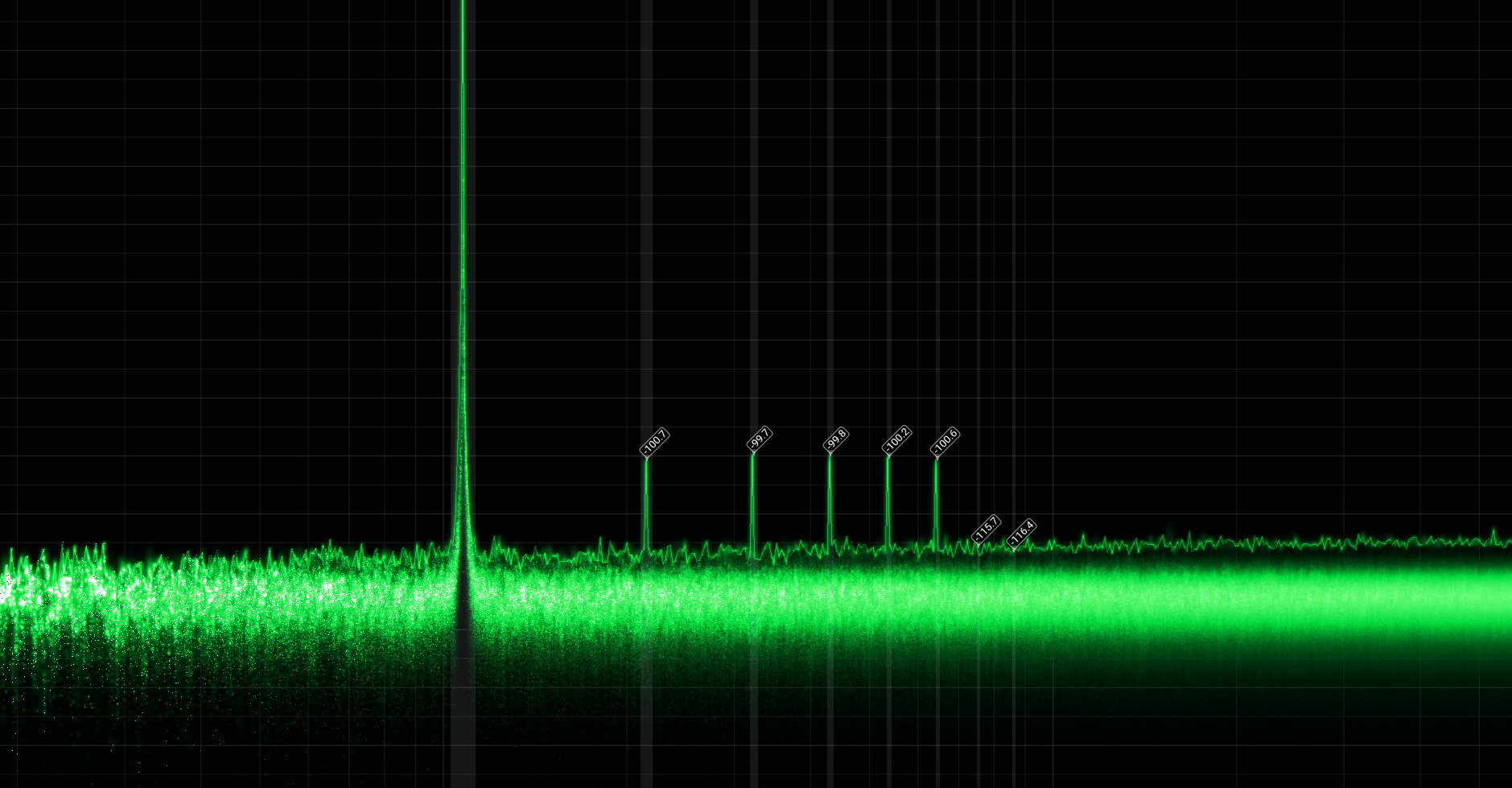

SA01 Spectrum Analyzer provide unrivaled precision, exceptional low-level signal sensitivity, signal processing, fast real time display with persistence, all thru outstanding user experience, for cheap.
Experience the instrument-like user interface - where you don't need to dig into menus to toggle a mode, set a parameter or wonder have you checked that checkbox on "page 3" of settings. Every parameter is visible right away, as well as configurable within 1-2 touches.
How low is your noise floor? We can make it 50dB better! From extremely long FFTs (16M samples, displayed at 10FPS, typically 24dB better than 65K FFT), thru actually working synchronous signal and vector averaging (get another 20dB improvement in seconds) and noise floor extension (yet another -7dB to your noise floor, really helps with precision of HD/IMD measurements).
Tired of waiting for the buffer to fill up to display your first measurement at longish FFTs? We've got you covered, with adaptive FFT window length - you get instant display with lower resolution, and it increases as the buffer fills up. No more waiting for entire measurement buffer fill-up only to find out it gone wrong.
And more, lots more. Try it yourself!
Like, really fast. From screen refresh rate, thru measurement-to-screen time, even in measurement modes that typically can't allow it. No matter what, you'll see all the data as it comes, and faster.
Touch friendly, instrument-like interface. It's not another "program". It's an instrument. A big, clean, and informative UI that lets you see and change every parameter of measurement. Analog and "digital" phosphor persistency modes, markers, zoom... Made to be touched, by you.
And rather cheap :) Hardware ages, fails, loses relevance. Software is forever :) Software based analysis, with simple, dumb, freely available and replaceable digitizers - is the way to go in this constantly evolving world.
$50 for community and $300 for professional licences.
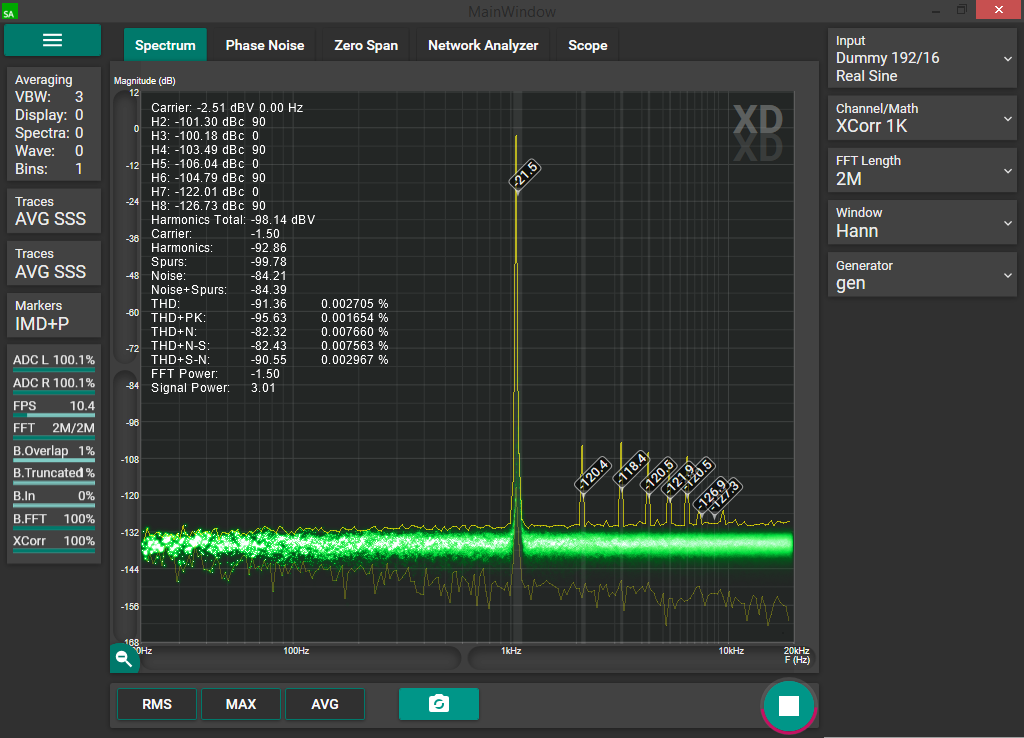
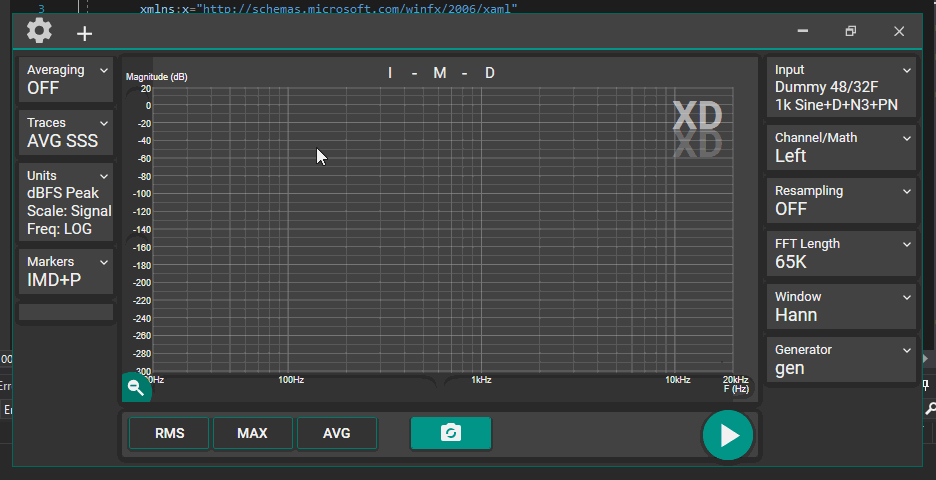
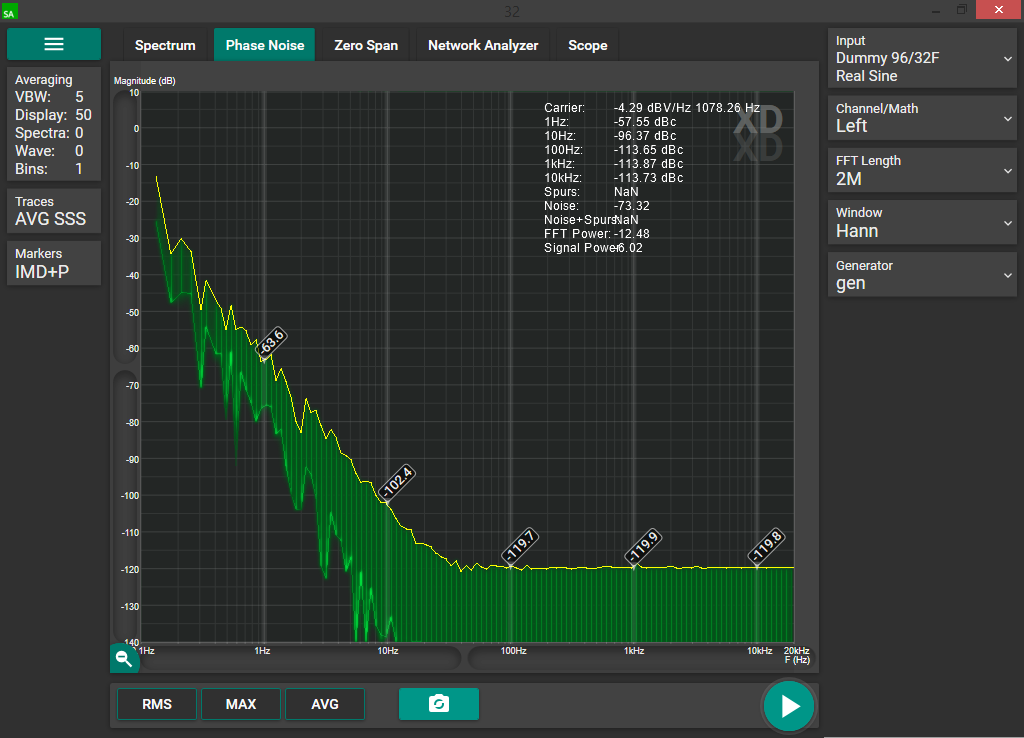
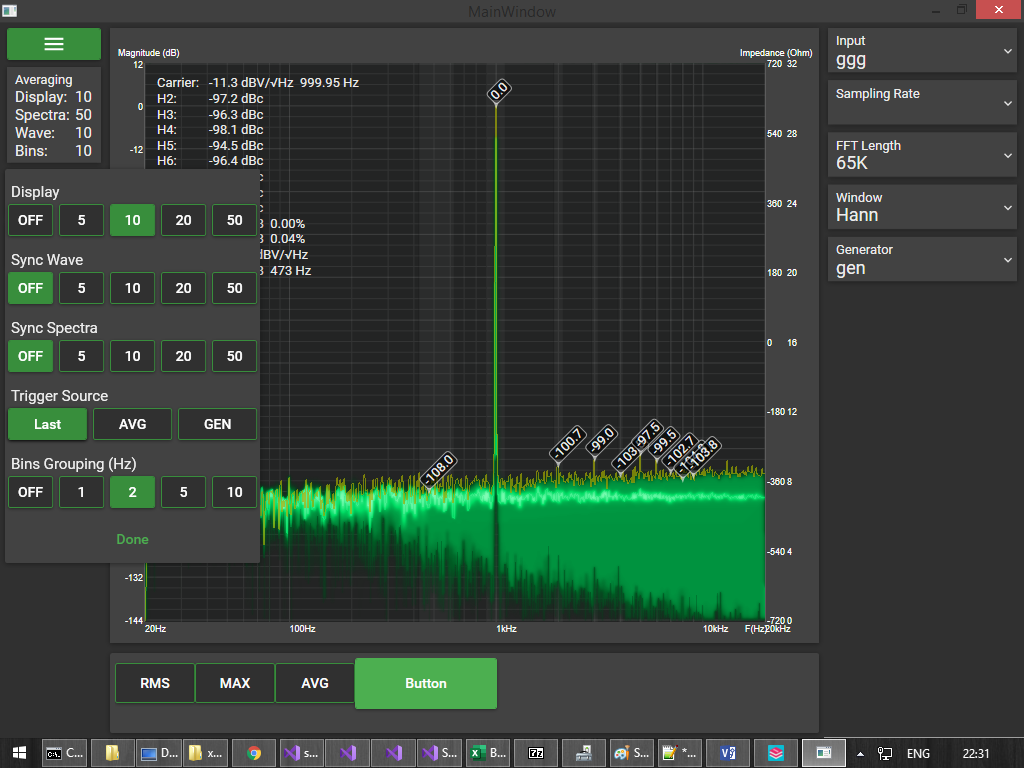
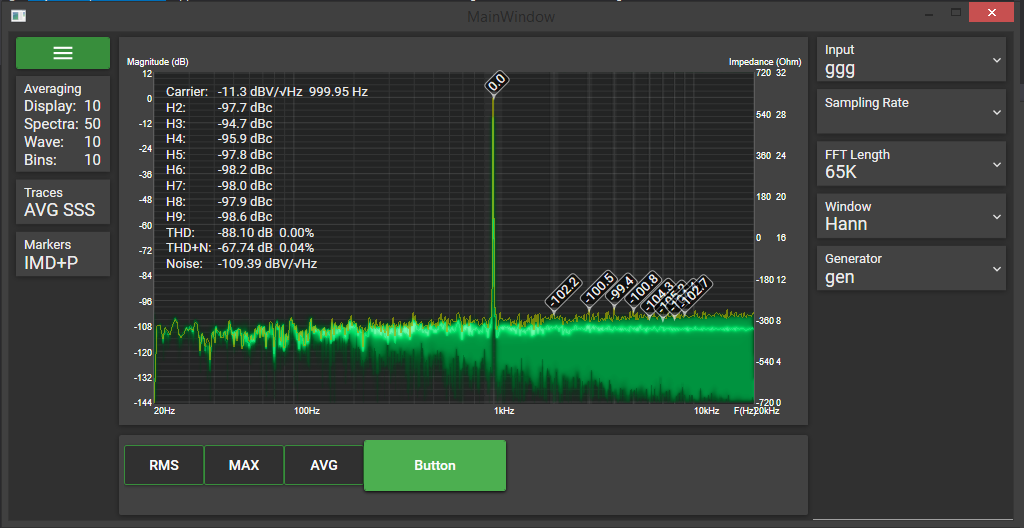
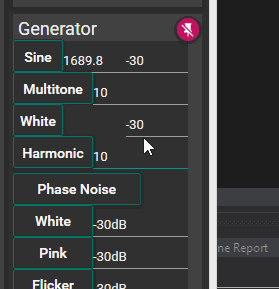
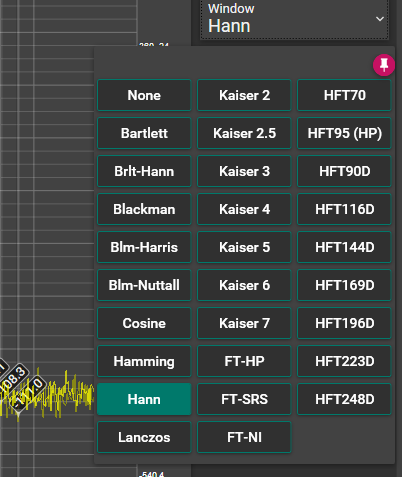
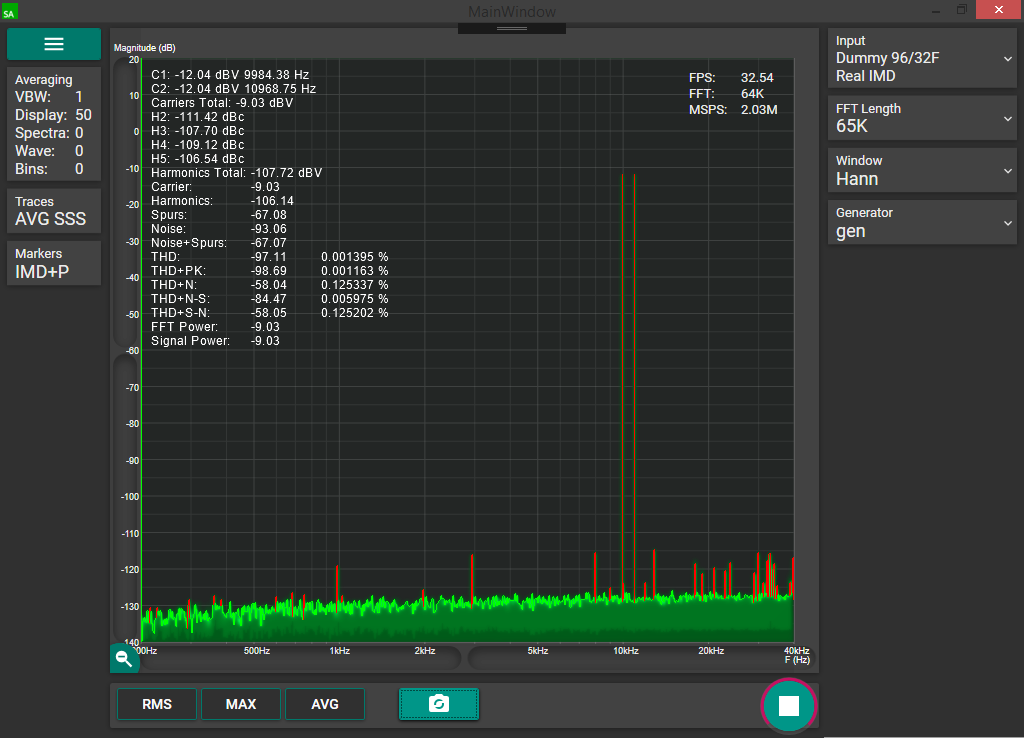
The list grows on a daily basis. We are striving to produce precise, beautiful, snappy, intuitive experience as well as unrivaled precision and advancements in signal analysis.
We have implemented most of available I/O interfaces to ensure compatibility with any existing and forthcoming devices, operation systems and configurations:
A lot of effort has been made to ensure correct representation of signal, as well as diminishing the effects of noise on measured data. Synchronous averaging is exceptional in it's ability to de-noise the measured signal, typical gain is of 20dB under the noise floor.
New: Redissue display of synchronous averaging methods - lets you see the difference (drift, phase noise and regular noise of signal), Output = Signal - AVG(Signal)
Time domain:
Frequency domain (both in scalar and vector modes!):
Compensation is a thing. Although FFT is supposed to produce exact display of underlying signal, it's output is never correct in presentation of noise, or in presence of windowing function.
The measured parameters won't change with different FFT length, Fs and window types, only will gain extra precision.
We are in full-on development of the product, here is our To-Do list: